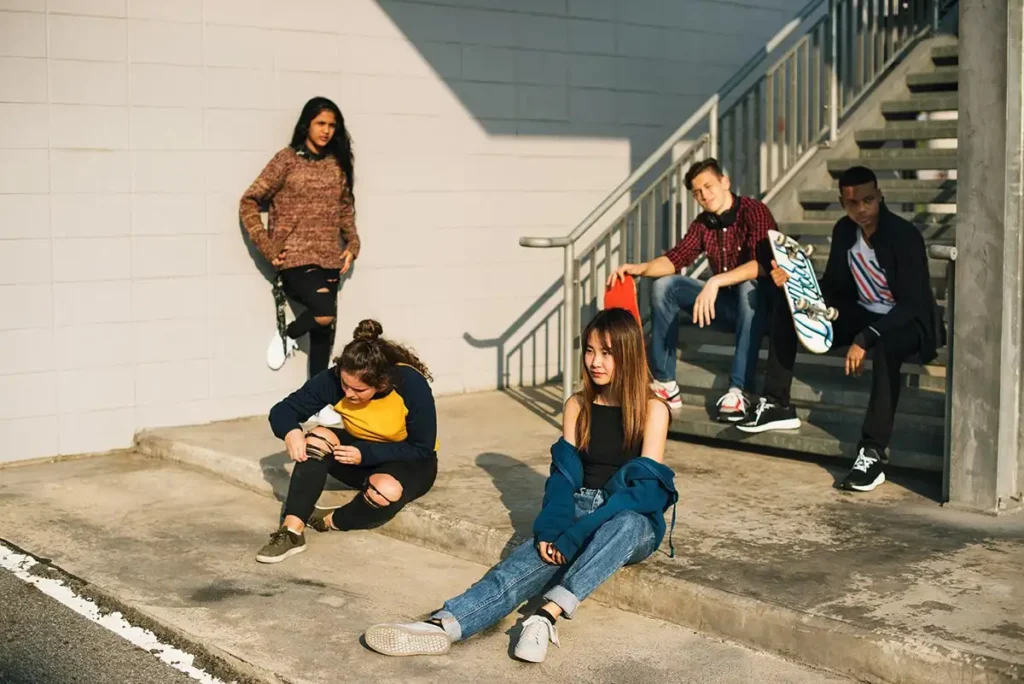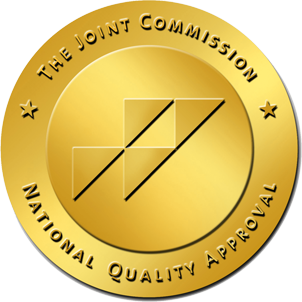
In recent years, the use of both alcohol and vaping products has become increasingly prevalent, particularly among young adults. While alcohol has long been a widely used and socially accepted substance, vaping is a relatively newer trend that has quickly gained traction, often marketed as a safer alternative to smoking cigarettes. But as public health experts continue to study the behaviors surrounding these substances, one question has emerged: is there a connection between alcohol use and vaping?
At 10 Acre Ranch, we understand the complex and intertwined nature of substance use and behavioral health.
This article explores the link between alcohol consumption and vaping, the risks associated with combining these habits, and what it means for those in recovery or considering treatment.
Understanding Alcohol and Vaping: A Brief Overview
Before we dive into the connection between the two, it’s important to understand each substance on its own.
Alcohol is a central nervous system depressant that affects the brain’s communication pathways. It impairs thinking, judgment, and coordination and has the potential to lead to physical dependence and addiction. Long-term use can result in serious health problems including liver disease, heart issues, mental health disorders, and more.
Vaping, or the use of electronic nicotine delivery systems (ENDS), involves inhaling a vapor produced by an e-cigarette or similar device. Most vaping products contain nicotine, a highly addictive stimulant that affects brain development, particularly in young people. Some devices also deliver THC (the psychoactive component in marijuana), flavored chemicals, or other unknown substances. Though initially introduced as a smoking cessation tool, vaping has become a standalone habit and, in many cases, a gateway to additional substance use.
Is There a Link Between Vaping and Alcohol Use?
The short answer is yes. Research suggests a significant correlation between vaping and alcohol use, especially among teens and young adults. The two behaviors often co-occur, and one may increase the likelihood of engaging in the other. Here’s how and why that connection exists:
1. Shared Social Settings
Both alcohol and vaping are frequently used in social settings—parties, clubs, music festivals, and even casual get-togethers. Because of this overlap, individuals who are already consuming one substance are more likely to be exposed to and experiment with the other.
Vaping can enhance the buzz of alcohol or provide a perceived balance (e.g., nicotine as a stimulant to counteract alcohol’s depressant effects). This dynamic can encourage continued use of both substances and lead to patterns of polysubstance abuse.
2. Common Risk Factors
People who vape are more likely to drink excessively, and vice versa. This is often due to shared risk factors such as:
- Peer pressure
- Impulsivity
- Poor stress management
- Mental health issues like anxiety or depression
- Lack of parental monitoring (in adolescents)
These underlying factors can contribute to both behaviors, making them more likely to occur together.
3. Reinforcing Effects
Nicotine and alcohol can create reinforcing loops. For instance, nicotine can reduce the sedative effects of alcohol, allowing individuals to drink more for longer periods. Conversely, alcohol may reduce inhibitions, making someone more likely to vape even if they normally wouldn’t. The combination may create a cycle where both substances feed off each other’s effects.
4. Increased Dependence and Cross-Addiction
When used together regularly, vaping and alcohol use can increase the risk of dependence on one or both substances. This phenomenon is known as cross-addiction or poly-addiction, where an individual becomes addicted to multiple substances simultaneously. Recovery can be more challenging in these cases because cravings and withdrawal symptoms are intensified and multifaceted.
Youth and Young Adults: A High-Risk Group
The connection between alcohol and vaping is especially pronounced in young people. According to data from the National Institute on Drug Abuse (NIDA), adolescents who vape are significantly more likely to engage in binge drinking or start using other drugs.
This is especially concerning considering the impact both substances can have on the developing brain. Research shows that alcohol and nicotine exposure during adolescence can interfere with brain development, particularly in areas responsible for impulse control, decision-making, and emotional regulation. Moreover, many young people falsely believe that vaping is harmless, which can lower their guard and increase the likelihood of risky behavior, including heavy drinking, drug experimentation, and unsafe sexual activity.

Health Risks of Combining Alcohol and Vaping
Using either substance alone comes with health risks, but combining alcohol and vaping can amplify those dangers. Here are a few reasons why the combination is risky:
1. Increased Risk of Overuse and Poisoning
Since nicotine may mask some of alcohol’s sedative effects, people may drink more than they intended. This can increase the risk of alcohol poisoning, a serious and potentially fatal condition.
2. Cardiovascular Strain
Both alcohol and nicotine can raise blood pressure and heart rate. Used together, they can place significant strain on the cardiovascular system, increasing the risk of heart attack, arrhythmias, or stroke.
3. Mental Health Complications
Alcohol is a depressant, and nicotine is a stimulant. The constant push and pull on the nervous system can exacerbate mood disorders, contribute to anxiety and depression, and impair cognitive function. Over time, this can worsen mental health and make recovery more difficult.
4. Lung and Respiratory Problems
Vaping has been linked to lung injuries and respiratory illness, while excessive alcohol use weakens the immune system. Together, they can increase susceptibility to infections and decrease the body’s ability to recover.
Get Your Questions Answered
Our expert & caring staff on site are available 24/7. Call us today.

Vaping as a Gateway to Further Substance Abuse
Some experts argue that vaping can act as a “gateway” behavior, especially for young people. Starting with nicotine or flavored vape products can lead to experimentation with other substances, including alcohol, marijuana, and harder drugs. This progression is especially dangerous for those with a genetic predisposition to addiction or those facing mental health challenges. What starts as seemingly harmless behavior can escalate into full-blown substance use disorder.
What This Means for Addiction Treatment and Recovery
At 10 Acre Ranch, we approach addiction as a multi-layered condition that often involves more than one substance. Understanding the connection between alcohol use and vaping helps us tailor treatment plans that address the full spectrum of a client’s needs.
Comprehensive Assessments
Effective treatment begins with a thorough assessment of all substances being used—not just the “primary” drug. If someone enters treatment for alcohol use disorder but also regularly vapes, it’s essential to treat both behaviors to reduce the risk of relapse.
Dual Diagnosis Treatment
Because both alcohol and vaping are often used to cope with mental health symptoms, many individuals benefit from dual diagnosis treatment. This integrated approach treats both the addiction and any underlying mental health conditions like anxiety, depression, or trauma.
Behavioral Therapy and Coping Skills
Cognitive Behavioral Therapy (CBT) and other forms of talk therapy can help individuals recognize the patterns that lead them to use substances together. Clients can learn healthier ways to manage stress, reduce cravings, and rebuild their lives without relying on alcohol or nicotine.
Supportive Recovery Environment
At 10 Acre Ranch, our community-based model creates a supportive environment where clients feel safe, respected, and empowered. Group therapy, recreational activities, and peer support play a crucial role in helping clients break the cycle of addiction and build a fulfilling life in recovery.
How to Break the Cycle
If you or someone you love is caught in the loop of alcohol use and vaping, know that you’re not alone—and that recovery is possible. Here are a few steps to begin breaking the cycle:
- Acknowledge the Connection – Recognizing that these behaviors may be fueling each other is the first step toward change.
- Seek Professional Help – Don’t try to tackle addiction alone. A professional treatment program can provide the tools and support needed for lasting recovery.
- Create a Sober Support Network – Surround yourself with people who support your recovery goals and encourage a healthier lifestyle.
- Replace Triggers with Positive Habits – Exercise, mindfulness, creative outlets, and structured routines can help reduce cravings and improve mental health.
Commit to Long-Term Recovery – Recovery is a journey, not a quick fix. Stay committed to your healing process and be patient with yourself along the way.
You Deserve a Healthier Future
The connection between alcohol use and vaping is real—and potentially dangerous—but understanding that link is a powerful first step. Whether you’re struggling with one substance or several, 10 Acre Ranch is here to help. Our compassionate team of addiction professionals is dedicated to helping individuals find freedom from substance use and reclaim their lives. If you’re ready to take the next step, reach out to us today. Your recovery journey starts here.







